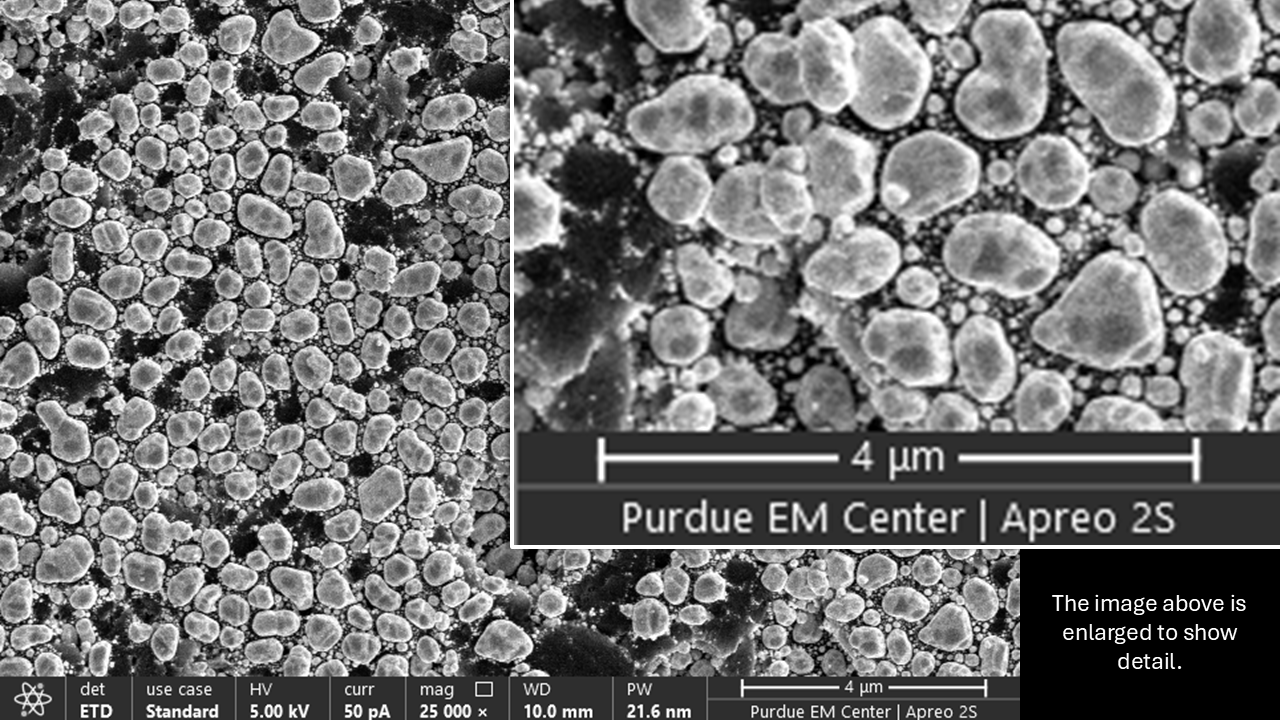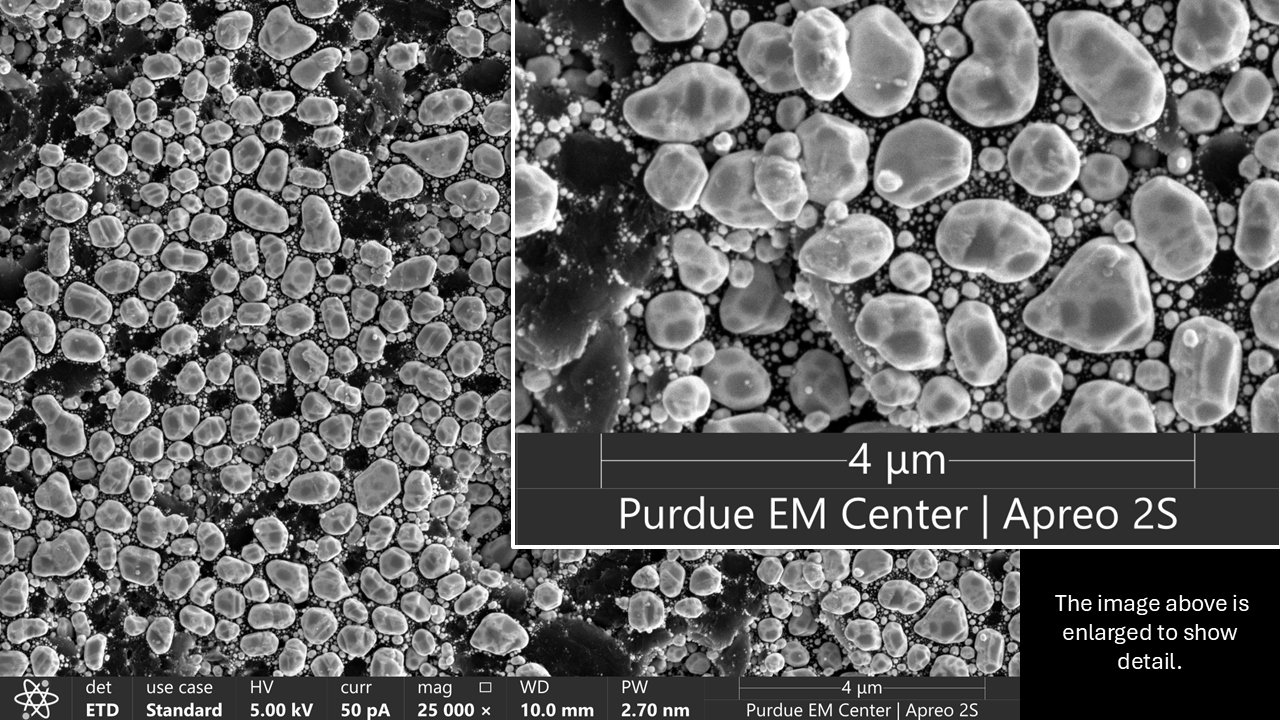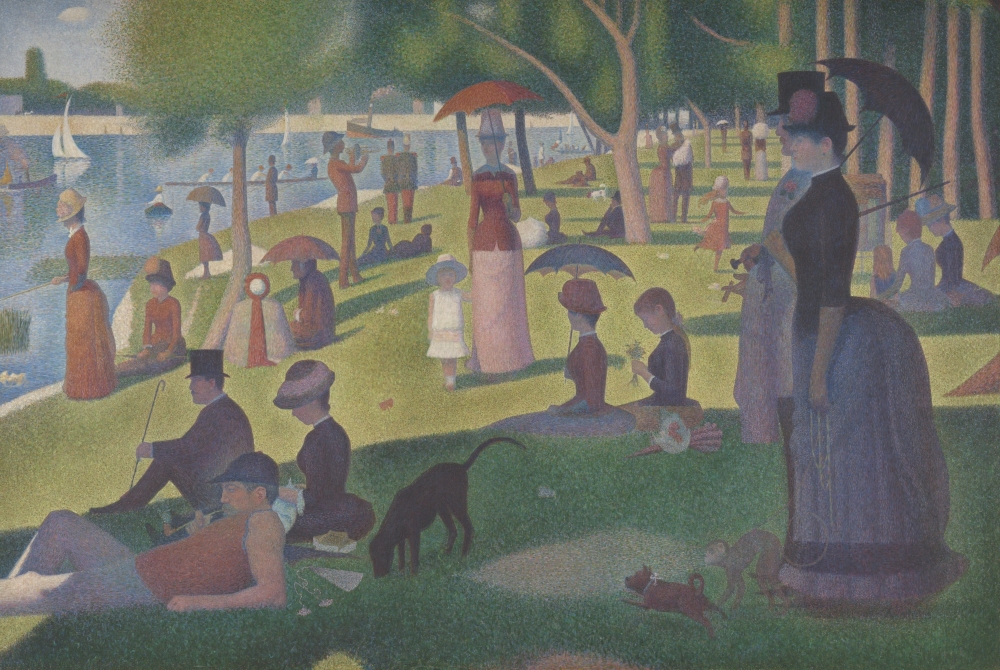Optimizing Pixel Resolution - SEM
What is pixel resolution? Pixel resolution is the number of pixels captured in a given field of view. Pixel resolution has two major impacts on your image: refresh rate and resolution. Different situations call for different pixel resolutions; you may always use the same pixel resolution, or…you may not! Below is a guideline to help you use the best pixel resolution for different scenarios.
Resolution (Image Clarity)
Low pixel resolution leads to grainy images – if the pixel resolution is low enough, you can see the individual square pixels that make up the image. This leads to reduced resolution in your image. As you reduce the number of pixels in your image, each pixel becomes larger. As the pixels become larger, any features or boundaries that are smaller that the size of the pixels will be impossible to resolve.
Higher pixel resolution decreases the size of each pixel, which improves the maximum image resolution at a given magnification. You can collect a startlingly high number of pixels within most SEM software, so consider the final use of the image when selecting a pixel resolution for capturing your images. Is this image going to be submitted in a paper, where it will be 2×2 inches on someone’s monitor? You may only need a moderate number of pixels. Will the image be displayed in a PowerPoint presentation where you will blow it up to be 5 feet wide? You may want to think about adding a few extra pixels
Low Pixel Resolution

High Pixel Resolution

Refresh rate
So, if higher pixel resolution gives better image clarity, why would I ever use low pixel resolution?
Lower pixel resolution means the electron beam is scanning across fewer points, which takes less time. This can help during sample navigation, when you don’t need high resolution, you just want to quickly scan across your sample to find a region of interest. Fast refresh rates are typically most helpful if you are navigating in a “joystick” fashion where movement is continuous.
Higher pixel resolution means the beam is scanning across more points, which takes longer. The improved image quality is helpful for focusing and correcting astigmatism, but the slower refresh rate causes a delay between the changes you make and the results that you see. This delay makes it difficult to focus and correct astigmatism accurately. To improve the image quality without compromising on refresh rate, you can use the Reduced Area Tool, which only images a small portion of the field of view to reduce the number of pixels being analyzed. This allows you to use higher resolution to improve your image quality without decreasing the refresh rate.
File Size
Although this is a third impact of pixel resolution, it is the one we want you to focus on the least. Capturing and saving images with a higher number of pixels increases the file size of the image; however, data storage is always increasing and is fairly cheap these days. If you spend time and money to use a high resolution microscope…why would you save your images with a lower resolution just to save file size?
Just for Fun
Another way to think about pixel resolution? Compare it with Pointillism.
For those of you who are not familiar with it, pointillism is a technique of painting using tiny dots of pure colors that become blended in the viewer’s eyes to make different hues. It was primarily developed by French artist Georges Seurat in 1886. Below are two famous examples of pointillism.


The key point in this context is the effect that the size of the paint dots has on image clarity and resolution. In the first painting, A Sunday on La Grande Jatte, the paint dots are very small compared to the overall size of the painting and that makes the resolution of the image quite good. You can make out facial features, like the nose, mouth, eyes, and even eyebrows on some of the people in the foreground of the painting. By comparison, in the second painting, Kinder auf einem Bauernhof, the paint dots are quite large relative to the size of the painting. You can see the individual dots in the painting in the same way you can see pixels in a low resolution image. There is much lower resolution in the image as a result of the large dot sizes. The faces of the two children have no distinguishable features because each dot is larger than the nose, mouth, and eyes of the child would be.